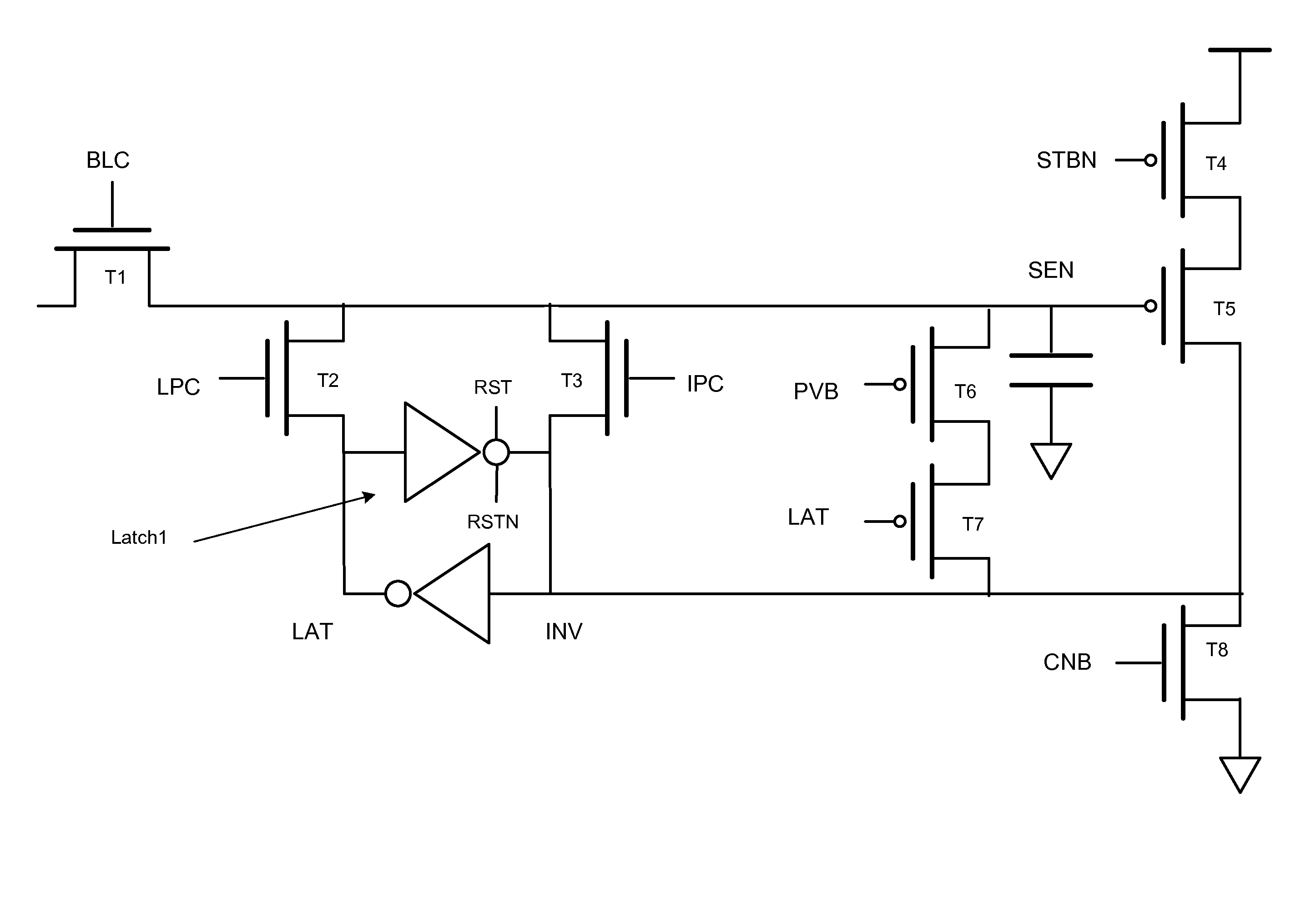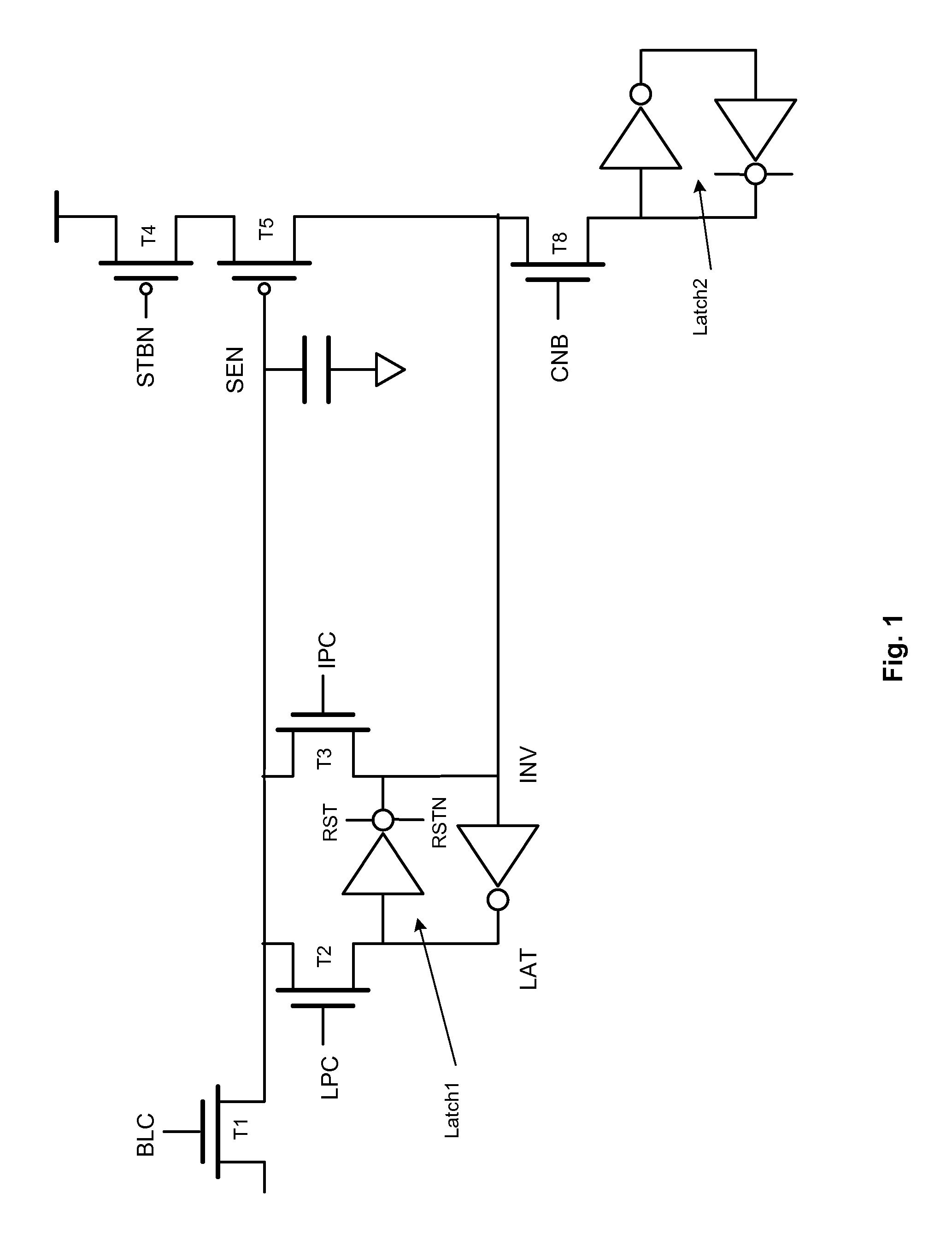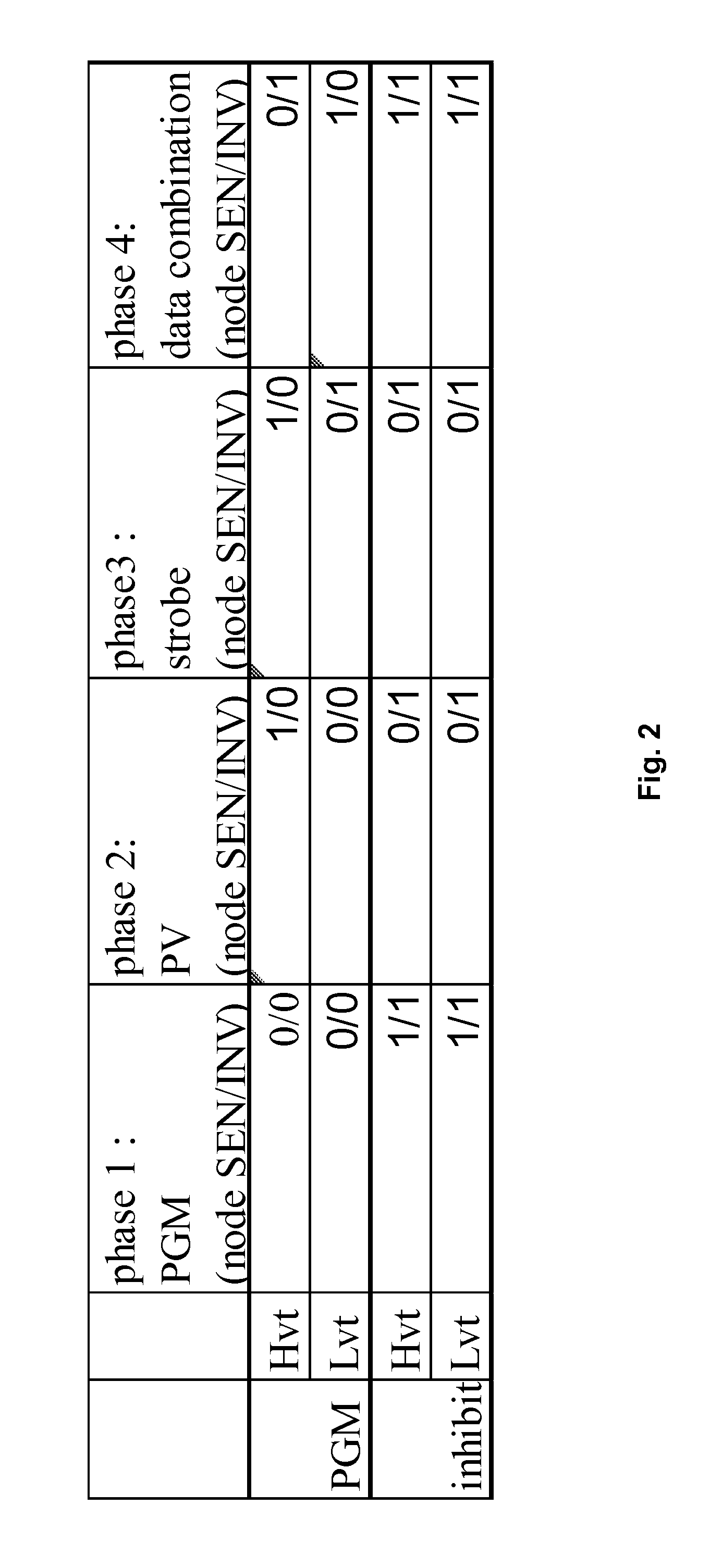Page buffer circuit
a buffer circuit and page technology, applied in the field of page buffers, can solve problems such as unfavorable memory cell programming
- Summary
- Abstract
- Description
- Claims
- Application Information
AI Technical Summary
Benefits of technology
Problems solved by technology
Method used
Image
Examples
Embodiment Construction
[0030]FIG. 1 is a circuit diagram of a page buffer circuit with multiple latches to store data.
[0031]Transistor T1 is an n-type MOSFET controlled by signal BLC at the gate of transistor T1. Depending on signal BLC, transistor T1 connects or disconnects a bit line (not shown) and node SEN. The bit line and node SEN are connected to a source and a drain of transistor T1.
[0032]Node SEN has a capacitance as shown. Node SEN is connected to the gate of transistor T5, a p-type MOSFET. A drain of transistor T5 is connected to node INV of Latch1, discussed below.
[0033]Transistor T5 is connected in series with transistor T4, a p-type MOSFET. Transistor T4 connects a supply voltage with transistor T5. A source of transistor T4 is coupled to the supply voltage and a drain of transistor T4 is coupled to a source of transistor T5. A gate of transistor T4 connected to signal STBN.
[0034]Latch1 has two inverters cross-coupled such that the output of one is connected to the input of the other. Latch ...
PUM
 Login to View More
Login to View More Abstract
Description
Claims
Application Information
 Login to View More
Login to View More - R&D
- Intellectual Property
- Life Sciences
- Materials
- Tech Scout
- Unparalleled Data Quality
- Higher Quality Content
- 60% Fewer Hallucinations
Browse by: Latest US Patents, China's latest patents, Technical Efficacy Thesaurus, Application Domain, Technology Topic, Popular Technical Reports.
© 2025 PatSnap. All rights reserved.Legal|Privacy policy|Modern Slavery Act Transparency Statement|Sitemap|About US| Contact US: help@patsnap.com



